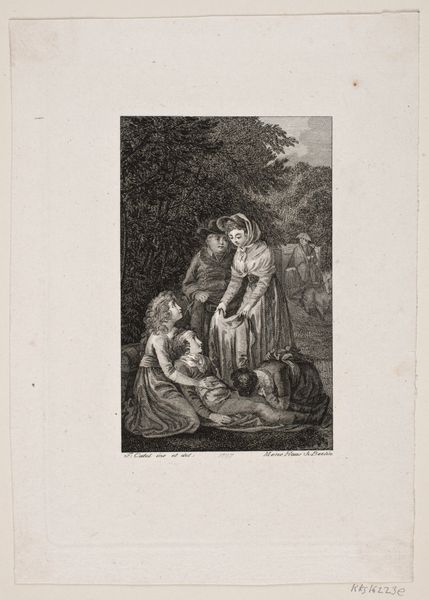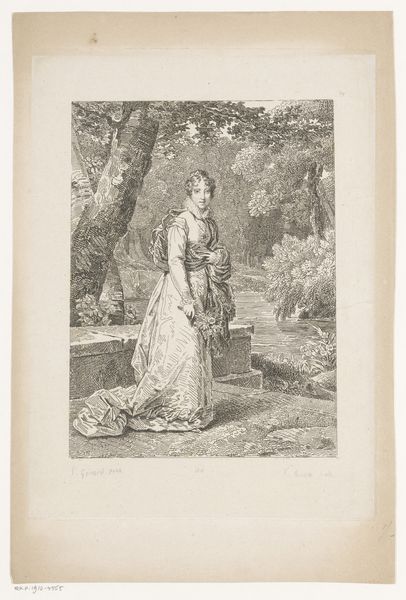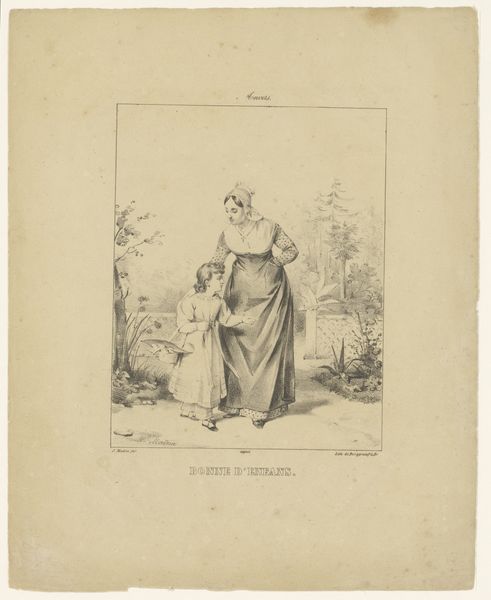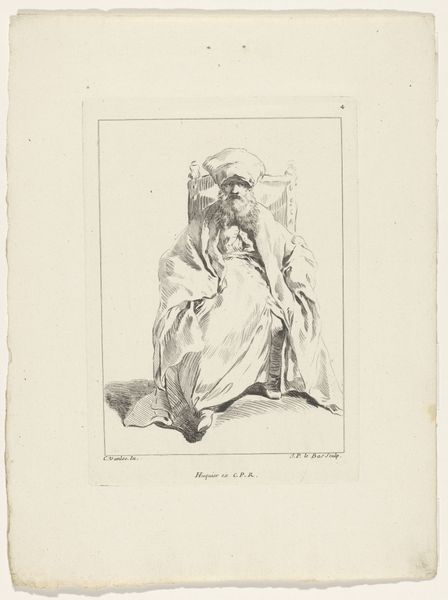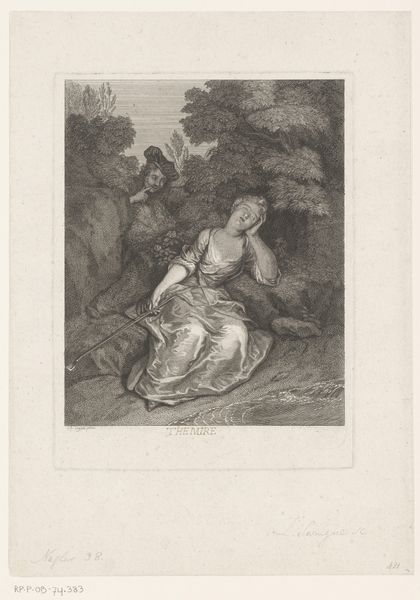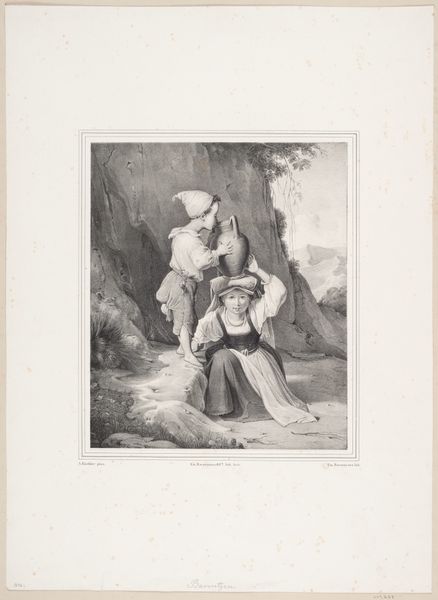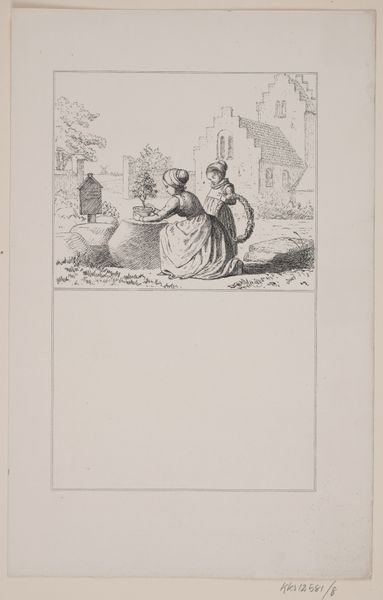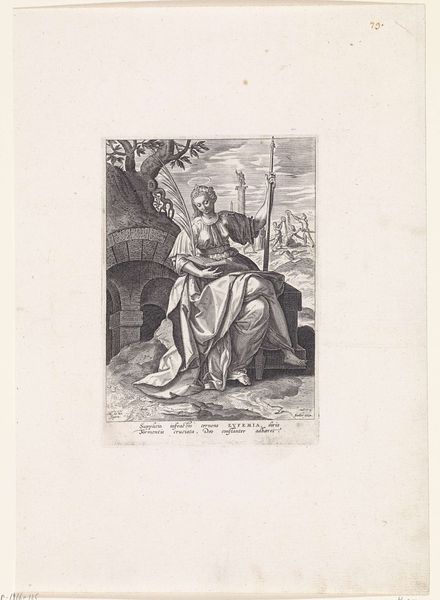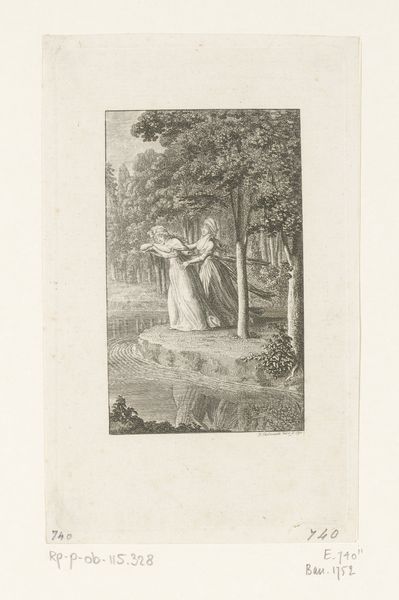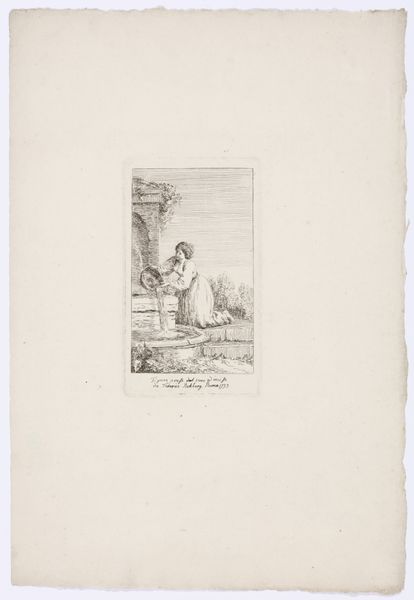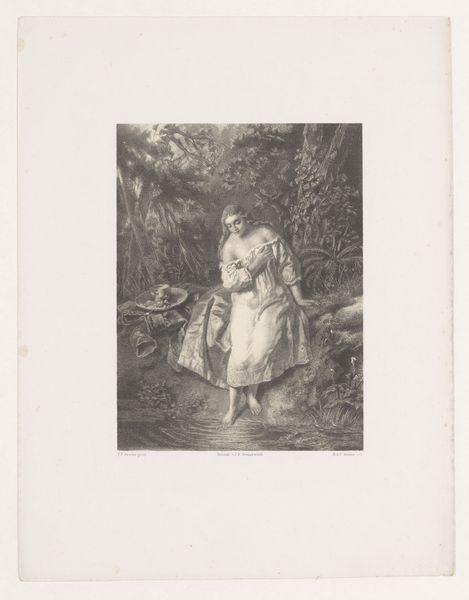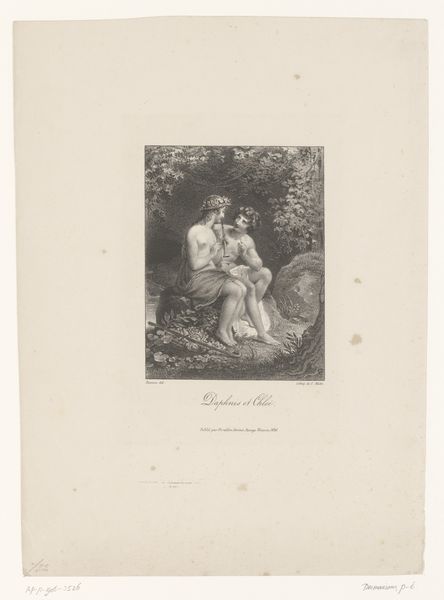
Dimensions: height 180 mm, width 131 mm
Copyright: Rijks Museum: Open Domain
Curator: This is "Twee jonge vrouwen lezend op een buitenterras" by Auguste Numans, created sometime between 1833 and 1879. It’s an engraving, a type of printmaking. Editor: My first impression is that it exudes a quiet, contemplative mood, perhaps touched with a hint of melancholy. The neutral color and fine lines add to this feeling of refinement and calm. Curator: It does, doesn't it? The figures of the women reading become symbolic. In Romanticism, reading represented inner life and intellectual pursuit, so these women embody an enlightened ideal. What meaning do you glean from the fact they're depicted outside? Editor: I am wondering what kind of paper was used and how the engraving impacted its surface. Also, consider the labour, and the lifestyle indicated by this: their setting is so obviously leisured. Gardens were cultivated through labour that these woman aren't engaged in directly, while being situated on a garden terrace like this is as much a symbol of leisure as reading itself. Curator: Absolutely, you have nailed an interesting tension: leisure and labour as commodities of that period. Gardens have strong associations with classical Eden-like states. It is also an age when education began being encouraged, in some sectors, for women, so here you have all these themes layered together in how they present their state and purpose. Editor: Right, but those connections aren't made of thin air, are they? Someone had to work the land to make that possible. The visual delicacy comes from the highly specialized work of engraving itself; all that visual pleasure sits on a substructure of social and material practices. Curator: And Numans, in his way, immortalizes that tension. His art functions as an interesting lens into this socio-cultural history. Editor: Seeing it this way really grounds the Romantic idealism and points towards questions about accessibility, class, and material realities in this time.
Comments
No comments
Be the first to comment and join the conversation on the ultimate creative platform.
